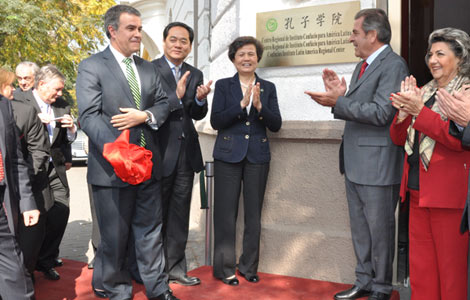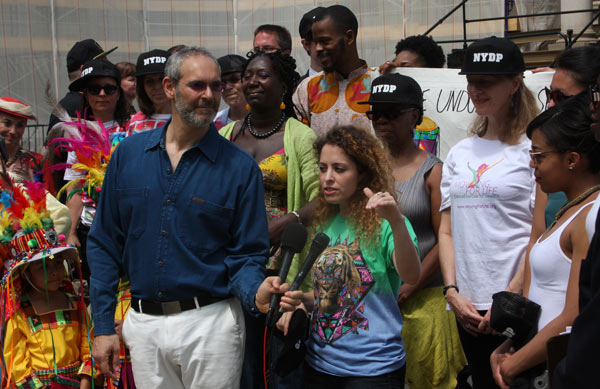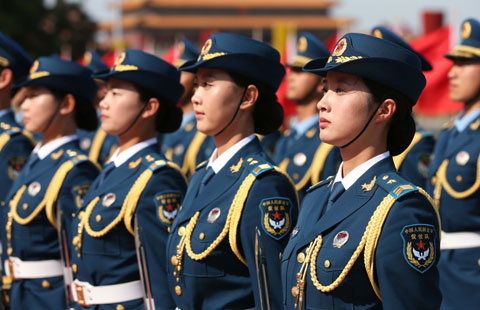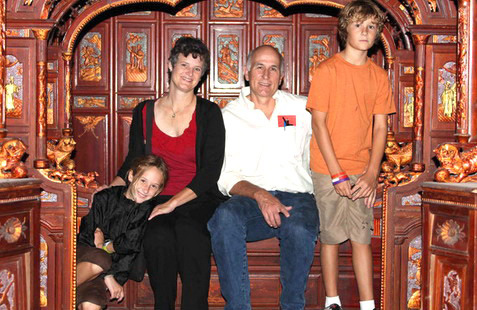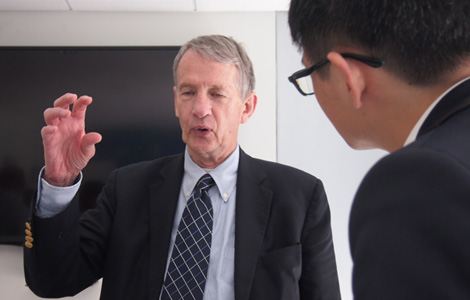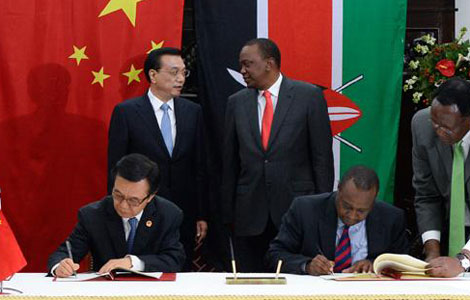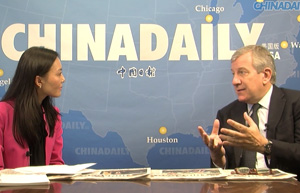Meeting mummy in the valley of the giants
Updated: 2014-05-14 07:31
By Cui Jia and Gao Bo (China Daily)
|
||||||||
|
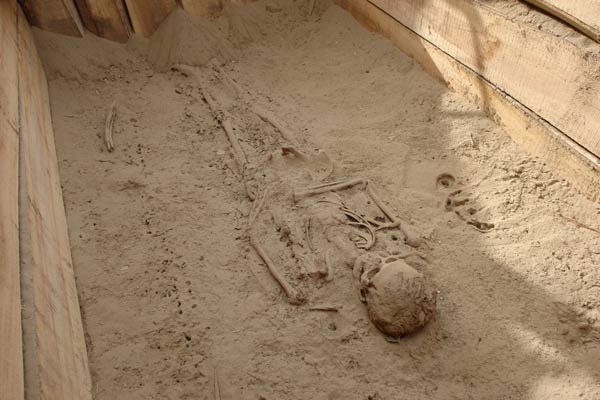 |
|
The skeleton of a young woman was one of the discoveries at Kungang tomb in Alar in the south of the Xinjiang Uygur autonomous region. The tomb is renowned for its giant mummies. PROVIDED TO CHINA DAILY |
As he carefully raised the lid of a long, boat-shaped wooden coffin discovered at an ancient burial site in the Xinjiang Uygur autonomous region, Liao Zhaoyu joked to his colleagues that they had discovered one of the fabled giants of Chinese legend.
|
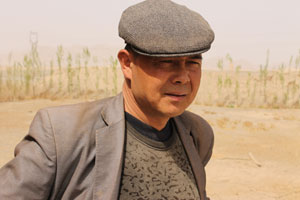 Keeping watch over a beacon of history When Reheman Amut worked in 1993, he never imagined that he would still be at his post 21 years later. The 42-year-old from Kuqa county in the Xinjiang Uygur autonomous region has spent half his life as a guardian of the Kizilgaha Beacon tower. His work has become an all-consuming passion, and a symbol of the difficulty of safeguarding ancient monuments in Xinjiang's desolate desert regions. The beacon, which has been standing on this stretch of the ancient trade route known as the Silk Road for 2,000 years, is the oldest and best preserved of a series of towers upon which fires were lighted to alert defenders to the approach of enemy troops and imminent attack. From its rectangular base, measuring 6 meters by 4, the tower tapers slightly to a height of 13 meters. "At the beginning, it was barren here. There were no roads, trees or houses", Reheman said, recalling his arrival as a temporary guardian on a monthly salary of just 220 yuan ($35). The beacon sits on the banks of an ancient river course in the Gobi desert, and when Rehemen first arrived in the area, food and water were in scarce supply so he had to make regular trips to the nearest village to collect water. "Before, we used donkeys, but now I have a (motorized) tricycle and can transport enough supplies in one trip to last at least a week," he said, adding that he once tried to dig a well, aided by his brother and father, but they abandoned the attempt after digging a 33-meter-deep hole without finding a drop of water. During the early days he found the loneliness harder to bear than the lack of water or food. "I sat by the beacon and spoke to it sometimes when I felt lonely, but I seldom do that now because I have my wife and daughter here", he said with a smile. In 2007, his life improved after a road was built and trees were planted. More importantly, his wife was able to share his quarters in the site's small ticket office at weekends. "I know how much he loves it here, and I support him. I wouldn't have married him otherwise," said Shadaitigul Yasen, Reheman's 40-year-old wife, who like her husband works for the local cultural relics bureau. Reheman's greatest concerns are the beacon and the nearby Kizilgaha Caves. He keeps a close eye on visitors to prevent damage to the ancient structures, and when there are no visitors, he patrols the area four or five times a day, a practice that has become a habit. "The height of the beacon has been reduced by about 20 centimeters over the years, and the fallen earth has made a mound at the base," he said, "We must protect the beacon as best we can, otherwise it will disappear someday." By Gao Bo |
When the lid was finally opened and Liao caught his first glimpse of the body inside, he was astonished to see a golden-haired figure that was even taller than Yao Ming, the famous 2.26-meter-tall basketball player.
Even though the discovery happened more than five years ago, Liao, director of the institute of the Culture of the Western Region at Tarim University in Alar, couldn't hide his excitement when he recalled the moment he came face to face with the tallest man of a "tribe of giants".
The local people dubbed the sand dunes that contained a number of oversized coffins "the valley of the giants", so Liao called the tomb "Kungang", the ancient name of Alar.
European features
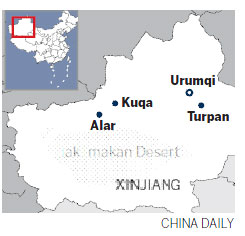
"The skeleton of the tallest mummy discovered so far is about 2.3 meters, and the coffin is about 2.8 meters long, but medical experts say the man may have been even taller when he was alive. In addition to features similar to those of ancient Europeans, such as blond hair and high cheekbones, many of the mummies or skeletons have large frames, more than 2 meters tall," said the 40-year-old, who was one of the first experts to explore the site in 2003 at the request of local farmers.
However, Liao and his team were not the first people to find the burial site. The vast tomb was originally discovered in the early 1980s by farmers attempting to flatten the sand dunes so they could plant crops. Unfortunately, instead of reporting their discovery, the farmers used many of the coffin planks as firewood and left the site badly damaged.
Many years passed before the farmers finally told their tale, and it wasn't until 2013 that the importance of the site began to be understood when researchers from Queen's University in Belfast in the United Kingdom analyzed bones, hair and seeds and concluded that the tomb could date back 4,600 years, Liao said.
"Human bones and pieces of coffin made from the wood of the Populus Euphratica (also known as the Euphrates or desert poplar) were visible everywhere in the sand dunes when I visited the site for the first time. It was obvious that the tomb had been raided, but we still managed to find five intact mummies," he added.
Alar sits at the northern edge of the world's second-largest desert, the Taklimakan, and on upper reaches of the Tarim River, which nourished a number of ancient civilizations in Xinjiang, and Liao instinctively felt that Kungang could related to one of them.
Deterioration
To ensure that the site was adequately protected, fences were hastily erected and a guard was hired, and now only one female mummy, wrapped in fragments of clothing, is on display in the exact location where she was found. "Her clothes were in one piece when she was first discovered and her face and eyebrows were clearly visible, but now the skeleton is showing and her condition deteriorates every day," said the guard. The skin has also flaked off two mummies kept at the museum at Tarim University, exposing their skeletons.
According to Liao, more mummies may still be buried in the sand dunes, but the institute doesn't have the funds or expertise required for effective excavation and preservation, so the experts have decided not to dig any further.
Ancient dried-up river courses are visible near the tomb and the poplar trees are still growing strong. Relics, including rudimentary boots, baskets made from grass and reeds, and wooden phalluses and statues, are culturally consistent with those found in the famous Xiaohe, or "Small river", tomb at Lop Nur, a dried-up lake in southern Xinjiang, but the Kungang mummies are much taller, according to Liao.
The well-preserved mummy of a young woman, dubbed "The Beauty of Xiaohe", was among the 30 mummies found at the lake site, the earliest of which dates from around 4,000 years ago.
Liao said a living area has been identified close to Kungang, but its archaeological importance is limited because the site has been severely damaged by the elements and grave robbers.
The size of the tomb and the huge number of relics discovered indicate the existence of a huge population with a long history, according to a research paper published in April 2013 by Victor Mair of the University of Pennsylvania in the US and Cheng Fangyi of Tsinghua University in Beijing.
The authors suggested that the relics Liao claims to have discovered at Kungang may actually derive from an ancient cemetery on Alar's southern border and argued that they had been handled unprofessionally and may have been inadvertantly lumped together with material from other areas.
Most Viewed
Editor's Picks

|

|
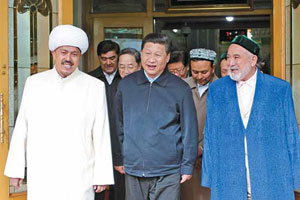
|
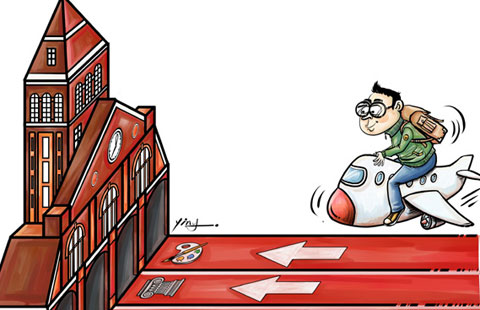
|
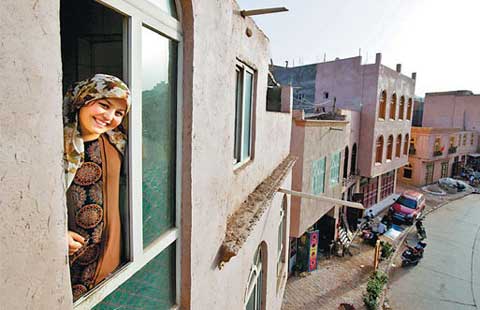
|

|
Today's Top News
Currency an issue in Lew's China talks?
Alibaba names US Treasury vet PR head
Turkmen relations get horsepower
Stud-farm owner lauds stamina of horse breed
Beijing slaps polluting firm with highest fine
Suspect killed in Sichuan bus blast
Trip reflects militaries' will to seek closer ties
Russia says respecting choice of Donetsk, Lugansk
US Weekly

|

|
